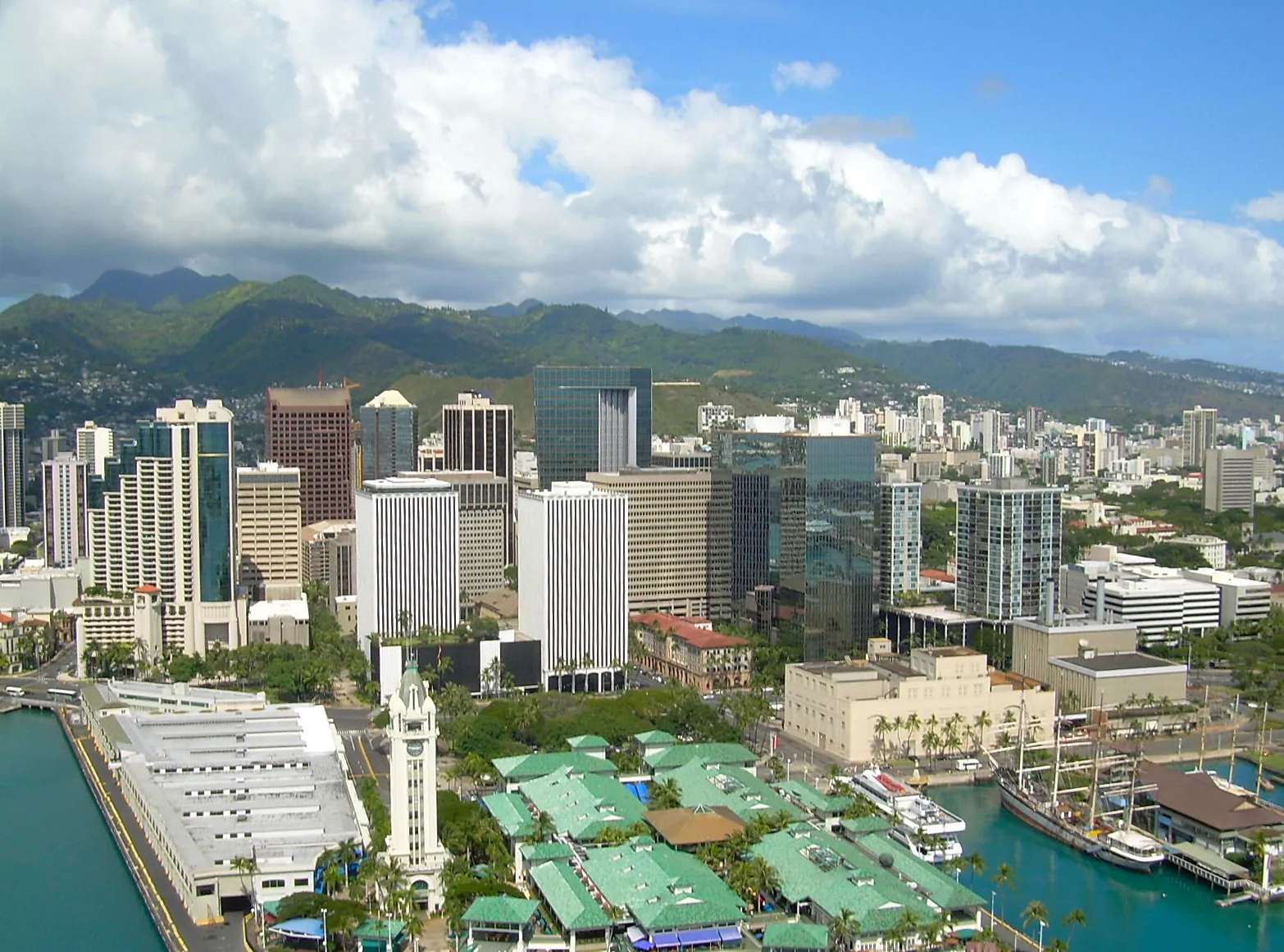Sun-kissed beaches, lush rainforests, and vibrant coral reefs paint a picture of paradise, but beneath the allure of Hawaii’s beauty lies a harsh reality for some residents. Enter Urban Honolulu, a bustling metropolis crowned with the dubious title of “worst city to live in Hawaii.” This article delves into the complexities of Honolulu’s existence, unmasking the factors that contribute to its ranking while acknowledging its unique charms and undeniable strengths.
Source – finance.yahoo
The High Cost of Paradise:
At the heart of Honolulu’s challenges lies its staggering cost of living, primarily driven by astronomical housing costs. With a median home value of $584,200, a staggering 9.5 times the median household income, owning a home in Honolulu is a distant dream for many. Compared to the national average of 3.5 times the median income, Honolulu stands as a beacon of financial inaccessibility. This disparity fosters a deep divide between those who thrive in the city’s economic engine and those struggling to make ends meet in the shadow of skyrocketing costs.
Life Beyond Dollars and Cents:
Beyond the financial burdens, Honolulu grapples with a significant poverty rate of 12.0%. This harsh reality manifests in limited access to affordable housing, healthcare, and educational opportunities, exacerbating the sense of disparity for low-income residents. Despite these challenges, a glimmer of hope rests in the city’s strong educational attainment. With 35.2% of adults holding at least a bachelor’s degree, Honolulu boasts a vibrant intellectual community with the potential to drive innovation and social change.
The Unseen Safety Net:
While Honolulu may be labeled the “worst city,” it paradoxically enjoys a safer environment than the rest of the state. Statistics reveal a lower occurrence of violent crimes per capita in Honolulu compared to the state average. This unexpected statistic suggests that despite economic hurdles, residents enjoy a sense of security within the city’s urban infrastructure. However, it’s crucial to acknowledge that these numbers may not fully capture the nuances of diverse neighborhoods, and pockets of vulnerability do exist within the city limits.
A Tale of Two Cities:
Honolulu’s story is one of stark contrasts. While its vibrant economy attracts entrepreneurs and skilled professionals, the high cost of living creates a sense of exclusion for many. The city’s natural beauty and cultural richness stand in stark opposition to the challenges faced by low-income residents. Honolulu is a microcosm of Hawaii itself, grappling with the conflicting realities of paradise and disparity.
The Road Ahead:
Moving forward, Honolulu faces a critical juncture. To bridge the socioeconomic divide, sustainable solutions are required. Investing in affordable housing, strengthening social safety nets, and fostering inclusive economic development are crucial steps towards a more equitable city. Embracing Honolulu’s cultural richness and vibrant community spirit can further create a sense of belonging for all residents, fostering a shared sense of responsibility for the city’s future.
FAQ’s
Q: Why was Honolulu labeled the “worst city” in Hawaii?
A: Honolulu’s ranking is primarily due to its staggering cost of living, particularly housing costs that far exceed the median income, making it difficult for many to afford basic necessities. The poverty rate also contributes to this ranking, indicating significant economic hardship facing some residents.
Q: Is it really impossible to afford life in Honolulu?
A: While challenges exist, it’s not entirely impossible. While homeownership may be out of reach for many, diverse career options and a robust rental market offer alternatives. However, it’s essential to budget carefully and understand the realities of the high cost of living before moving to Honolulu.
Q: Is Honolulu really safer than other parts of Hawaii?
A: Statistics show a lower rate of violent crime per capita in Honolulu compared to the state average. However, it’s important to remember that these numbers may not represent all neighborhoods equally, and areas with higher poverty rates may face different levels of safety concerns.
Read More:
- This City Has Been Named Oregon Worst City To Live
- This City Has Been Named New York Worst City To Live
Conclusion:
Honolulu’s ranking as the “worst city” is a sobering reminder of the complexities lurking beneath the surface of paradise. However, within this reality lies the potential for positive change. By acknowledging its challenges, embracing its strengths, and prioritizing inclusivity, Honolulu can transform itself into a city that lives up to its promise of paradise for all.
Disclaimer:
This article presents information and analysis based on available data and statistics regarding Honolulu, Hawaii. However, it is important to acknowledge the following:
- Rankings and labels are subjective and depend on the criteria used. Honolulu’s “worst city” ranking reflects specific factors, such as affordability, but does not encompass the city’s entirety and its diverse experiences.
- Data and statistics may not fully capture the nuanced realities of different neighborhoods and communities. There is significant variation in living conditions and experiences within Honolulu, and focusing solely on aggregated data may overlook important local dynamics.
- This article offers a snapshot in time and does not predict the future. Honolulu is a constantly evolving city, and the issues and challenges discussed here may change over time.
This disclaimer aims to provide transparency and encourage readers to engage critically with the information presented. It is always crucial to consider multiple perspectives and diverse experiences when forming opinions about complex urban environments like Honolulu.

